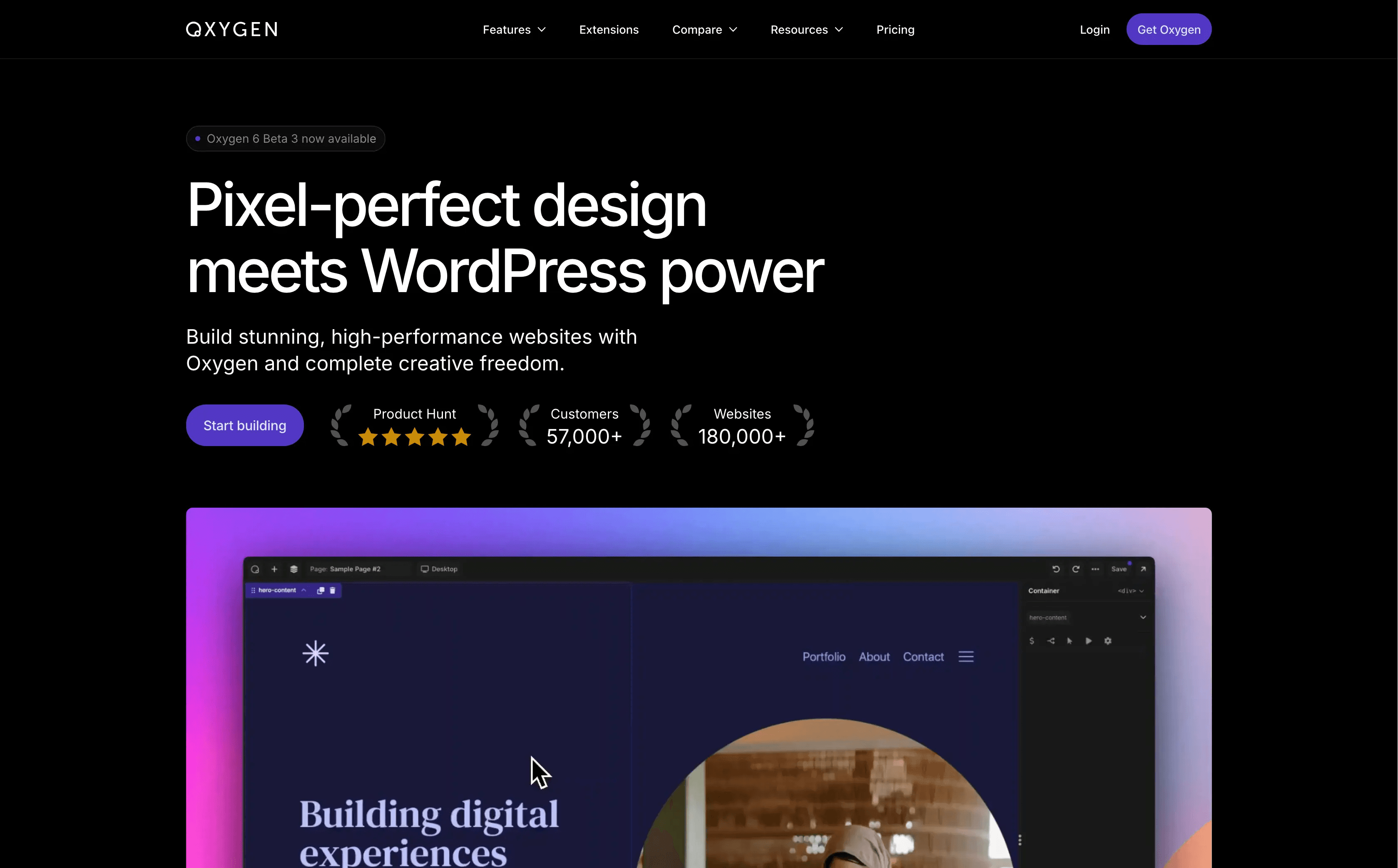Oxygen Builder Review 2025: Why It's The Best WordPress Builder for Developers
Discover why Oxygen Builder is the top WordPress visual builder in 2025. In-depth review on performance, features, pros/cons, and comparisons for developers.

Introduction
If you’re searching for the best visual WordPress builder in 2025, chances are you’ve already come across Oxygen Builder. As a developer who uses Oxygen daily—both for my freelance projects and for client work at my agency—I can confidently say that Oxygen sets the gold standard for clean code, performance, and creative freedom.
In this review, I’ll share my personal experience with Oxygen Builder, break down the pros (and a couple minor cons), and explain why I recommend it to every developer, agency, and business I work with. With the recent release of Oxygen 6, which has been completely rebuilt for even better performance and flexibility, it's more powerful than ever.
Performance and Speed
When it comes to WordPress builders, performance is everything. Oxygen’s speed and clean code output are phenomenal. It produces incredibly lightweight HTML with no unnecessary divs or bloat, leading to sites that load noticeably quicker compared to competitors like Elementor or Divi. In my tests and real-world projects, Oxygen-built sites consistently achieve top scores on Core Web Vitals and PageSpeed Insights, often outperforming others by 20-30% in load times.
If you’re serious about SEO rankings, user experience, and mobile optimization, Oxygen’s infrastructure gives you a real edge. Its class-first workflow and one-to-one CSS properties panel ensure pixel-perfect designs without the overhead of traditional page builders. Even on complex sites with dynamic content, I've seen zero performance issues, making it ideal for high-traffic agencies.
Ease of Use and Learning Curve
Want to give Oxygen a try?
Check 'em out!Oxygen Customer Support Review
This is where Oxygen really shines. I hold every other builder’s support to the standard Oxygen has set—and very few come close. Their team is:
- Knowledgeable: They’ve never failed to solve an issue, no matter how technical, from ACF integrations to custom code tweaks.
- Responsive: Wait times are short via ticket system, and you're never left hanging.
- Professional and Friendly: It never feels like you're talking to a script or being rushed.
In fact, Oxygen's support is among the best I've experienced across any WordPress tool or plugin provider. With Oxygen 6's smoother workflow, I've needed it less, but when I do, it's world-class.
Integrations and Add-ons
Another huge advantage is Oxygen’s seamless integrations and extensions. It has tight integration with Advanced Custom Fields (ACF) out of the box, allowing for dynamic, data-driven sites without extra plugins. While the included elements aren't as extensive as something like Elementor, that's easily supplemented with add-ons like OxyExtras, which adds premium components, animations, and utilities for a small one-time fee.
I’ve used OxyExtras on nearly every project to enhance the builder’s capabilities, turning Oxygen into a full-fledged powerhouse for eCommerce, memberships, and custom WooCommerce stores. The marketplace offers even more extensions, ensuring you can expand as needed without bloating your site. No surprises—just smooth, reliable builds that make life as a developer significantly easier.
Pros and Cons of Oxygen Builder
Pros
- Phenomenal performance and clean code (lightweight HTML with no bloat)
- Developer-focused freedom (class-first workflow, full theme builder, ACF integration)
- Lifetime unlimited licensing (one-time payment for personal and client sites)
- Easy advanced customizations once past the learning curve
- Ideal for developers, agencies, and businesses needing high-speed, flexible sites
Cons
- Steep learning curve: Not beginner-friendly; best for those with some coding knowledge
- Fewer built-in elements: Requires add-ons like OxyExtras for more design options
Oxygen vs Competitors
Compared to beginner-friendly builders like Elementor or Divi, Oxygen wins on every metric that matters: clean code, speed, and bloat-free output. Elementor is great for quick designs but often results in messy HTML and slower sites, while Divi adds unnecessary weight. Against other premium players like Bricks Builder or Breakdance, Oxygen often comes out ahead thanks to its affordable lifetime pricing (around $180 vs. Bricks' $600), rebuilt Oxygen 6 for better reliability, and superior developer control. Community feedback on Reddit highlights Oxygen's edge in performance for dev-focused users, though Bricks has a gentler curve for Elementor migrants.
Final Verdict: Is Oxygen Worth It?
In my experience, the answer is a resounding yes. If you’re a developer building custom sites, managing agency projects, or simply want unmatched control over your WordPress website, Oxygen is the only builder I recommend.
You get blazing speed, lightweight code, and effortless advanced integrations. While it’s not the easiest for absolute beginners, the ROI in terms of time saved on optimizations, headaches avoided from bloat, and client satisfaction is absolutely worth it.
Oxygen Builder isn’t just good—it’s the best visual WordPress builder I’ve used in over a decade of web development.